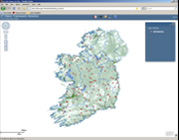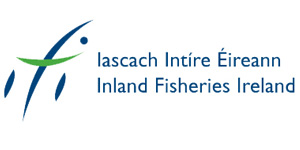
WFD Summary Reports
Fish Survey Reports
Lakes
Rivers
Transitional Waters
Meta
Search
IFI Information
Related Reports
Links
The WFD and Fish
What is the Water Framework Directive (WFD)?
- The WFD came into force in the EU in December 2000 and was incorporated into Irish law by regulations in December 2003.
- The WFD establishes a legal framework for the protection and management of water resources throughout the EU.
What are the main objectives of the WFD?
- To protect and maintain high and good status of all waters where it exists
- Prevent any deterioration in the existing status of waters
- Restore all waters that are impaired so that they achieve at least good status by 2015.
- The WFD is being managed at local level within River Basin Districts (RBDs)
- These objectives will be achieved through the development of River Basin Management Plans (RBMP) and ongoing surveillance monitoring.
Why monitor?
- The WFD calls for the protection and restoration of clean water across Europe.
- A key step in this process is for Member States to assess the health of their surface waters through national monitoring programmes.
- Monitoring is the main tool used by Member States to classify the ‘ecological status’ of each water body (section of a river or other surface water)
- The WFD sets a 5 class scale (high, good, moderate, poor and bad ecological status)
- Once Member States have determined the current ecological status of their water bodies, ongoing monitoring then helps Member States to track the effectiveness of measures needed to clean up water bodies and achieve good ecological status.
What is monitored for the WFD?
- WFD requires monitoring of water chemistry, fish, algae, insects, plankton, plants and habitat.
- WFD also requires monitoring of human impacts on hydromorphology (i.e. the physical shape of river systems).
Who will monitor fish for the WFD?
- Inland Fisheries Ireland (previously the Central and Regional Fisheries Boards) has been assigned the responsibility of delivering information on fish stocks.
- A team of scientists have been recruited to carry out monitoring surveys examining the fish populations on lakes, rivers, canals and estuaries across Ireland.
Where will sampling take place?
- Sampling sites were chosen based on criteria set down by the Environmental Protection Agency
- These aim to include a range of habitats and ecological status classes.
- Over 300 sites encompassing rivers, lakes and transitional waters (estuaries) are examined in a three year rolling programme.
- Additional operational and investigative surveys may also be conducted
How are fish monitored?
- Sampling for fish is conducted using a variety of methods including electric-fishing and many forms of netting. See the ‘How are fish sampled?’ link above
- EU member states are required to establish standardised sampling methods to investigate the requirements laid out by the WFD.
- Surveys are conducted between June and October.
- All species are targeted. Fish are an indicator of water quality. Healthy fish stocks indicate good water quality.
- WFD requires information on abundance, species composition and age structure of all fish present in a water body.
- Every effort is made to release fish
- A subsample of fish is removed for laboratory analysis.
Value of the information
- Monitoring will provide new information on the status of fish stocks throughout Ireland
- It will provide factual information to angling clubs and owners of waters surveyed
- Information will be used to evaluate the effectiveness or otherwise of the control measures in the River Basin Management Plans
